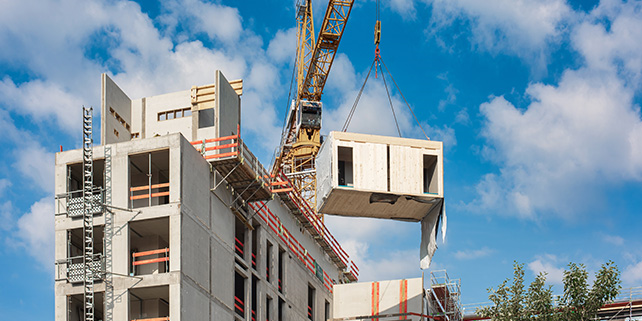-
Australia
Copyright © 2025 Powered by BCI Media Group Pty Ltd
Confirm Submission
Are you sure want to adding all Products to your Library?
Contact Detail

Hospitals are vital for our health and well-being, and as such, they need to be designed and built with the utmost care and attention to detail. With the ongoing COVID-19 pandemic, the importance of hospital architecture and safety has become even more apparent, and there are certain construction needs that are here to stay in 2023.
One of the most important construction needs for hospital architecture and safety is the need for infection control. Hospitals need to be designed and built in a way that minimizes the spread of infection and disease. This includes the use of non-porous surfaces, such as stainless steel or solid surface materials, which are easy to clean and disinfect. Acculine’s door frame protection is an important aspect of infection control in hospitals. Door frames are often touched by patients, visitors, and staff, and can easily become contaminated with harmful germs. By installing door frame protection, such as automatic door openers or hygienic door handles, hospitals can minimize the transfer of germs and reduce the risk of cross-contamination. These protective measures also provide a more hygienic surface for patients and staff to touch, reducing the risk of infection. In addition, door frame protection can help to maintain the cleanliness of the hospital environment by reducing the need for frequent cleaning and disinfecting of door frames. This helps to create a safer and healthier environment for everyone in the hospital. Additionally, hospitals should also include mechanical ventilation systems that can filter out airborne contaminants and prevent the spread of infection through the building’s HVAC system.
Another crucial aspect of hospital architecture and safety is flexibility and adaptability. Hospitals must be designed and constructed with the ability to evolve with changing needs and technologies. The utilization of modular construction methods is one solution that allows for easy changes and modifications to the building’s layout and design. Furthermore, hospitals should also have infrastructure that can accommodate the integration of new technologies, such as telemedicine, which is projected to play a significant role soon. With modular construction on the rise due to trade shortages and weather delays, and its suitability for remote locations, it is a valuable consideration for hospital construction. Acculine have helped a number of clients with their modular hospital construction with rapid turnaround times, value-engineering and installation advice tailored to modular construction. Read about Erilyan Director Jon Lewis’ experience with Acculine here, on his modular Emergency Department projects.

A third important construction need for hospital architecture and safety is the need for energy efficiency. Hospitals are large buildings that consume a significant amount of energy, and it is important that they are designed and built in a way that minimizes energy consumption. This includes the use of energy-efficient lighting and HVAC systems, as well as the incorporation of renewable energy sources, such as solar panels or wind turbines. Several hospitals across the state have undergone solar power transformations in just a few years, partly due to the $13.5 million Regional Health Solar Program implemented by the State Government. This program provides support to 74 healthcare facilities. The program has installed solar systems ranging from 8kW to 759kW, with the Central Gippsland Health Service in Sale now being the largest hospital solar installation in the country. While commercial solar is appearing in facilities throughout Australia, Victoria is particularly active in this field and inspiring other states to follow suit. Other notable solar projects include a 545kW development at the Friendly Society Private Hospital in Bundaberg, Queensland, which was completed by Gem Energy in 2017.
Lastly, hospitals should also be designed with consideration for the comfort and well-being of patients and staff. This includes the use of natural light, comfortable seating and other amenities, as well as a design that minimizes stress and anxiety for patients. Courtyards and gardens play a vital role in hospital design as they provide a peaceful and calming environment for patients, families, and staff. These outdoor spaces offer a respite from the sterile hospital environment and allow for a connection with nature, which has been shown to have numerous health benefits. They can also be used for therapeutic purposes, such as outdoor rehabilitation or gardening therapy. The incorporation of greenery into the design of a hospital can also have a positive impact on the mental health of patients and staff, improving overall well-being and helping to create a healing environment.
In conclusion, hospital architecture and safety are of the utmost importance, and there are certain construction needs that are here to stay in 2023 in Australia. These needs include the need for infection control, flexibility and adaptability, energy efficiency, and consideration for the comfort and well-being of patients and staff. By incorporating these needs into the design and construction of hospitals, we can ensure that our healthcare facilities are safe, effective, and comfortable for all who use them.


